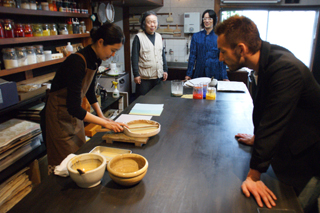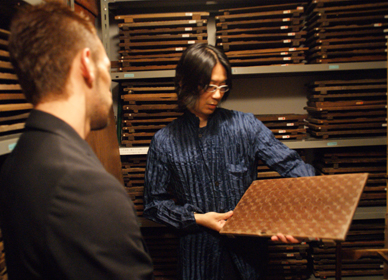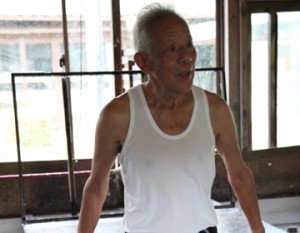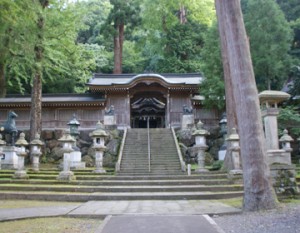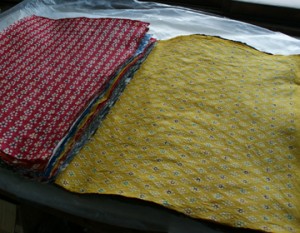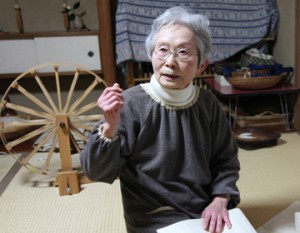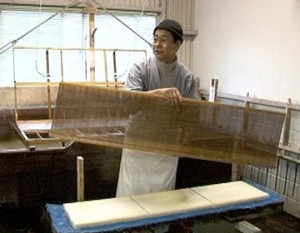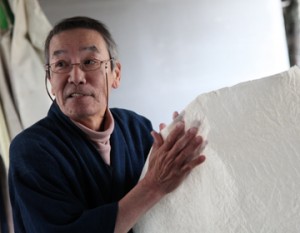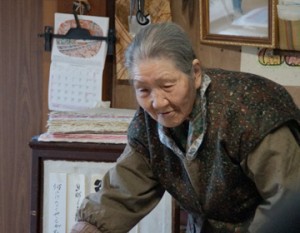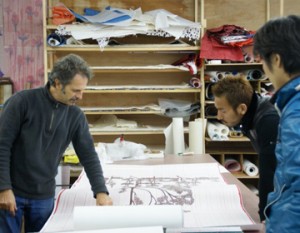Karakami Decorating Historic Architecture
Kara kami ”唐紙” is just as the Chinese characters describe; paper that has been made by skills deriving from Tang. In the Heian period, when it was first introduced from Tang, all paper were called ”Karakami”. However, later the name Karakami has been used to specifically refer to ”montoshi” made in Japan. Karakami was so adorned for its beauty, it was used for writing down poems but was later used for interior decoration and after the Edo period it has been used for fusuma and wall paper in temples, nobles’ houses, daimyo mansions, merchants houses, town houses, adding color to daily life. ”KARACHO” works have earned reputation through Katsura Rikyu, Nijo Castle, Yogenin, and other historical architecture and they have also been responsible for restoration. There were more than 10 stores specializing in Karakami in the Edo period, but after the end of the Edo period with the introduction of western civilization, the wars, most were abolished and now in the present, ”KARACHO” is the only remaining Karashi company in Japan.
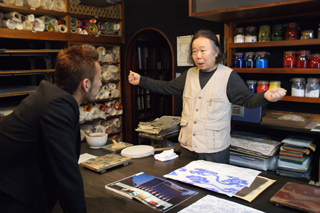
The Beautiful Patterns Reflected on Japanese Paper
Karakami making starts with painting mica or pigments with a tool called a furui, something that looks like a fan. It is hit gently for the color to settle in the engraved patterns. Washi (Japanese paper)is placed on the board, to carefully copy the picture. It is not rubbed strongly as a normal wood lithograph would, but is done gently by hand. Nakata has a try but realizes it is a delicate job, requiring concentration. A newly-made karakami is fluffy and soft, and has a unique beauty. ”KARACHO” founded approximately 400 years ago have more than 650 creations that date back to 1791. All of these boards can still be used today, and creates new ones with different color combinations. Currently besides being used as fusuma, byobu, as they had in the past, they are used for tapestries, frames, cards and letter sets, in hope that this traditional culture will remain and be handed down in the future.
